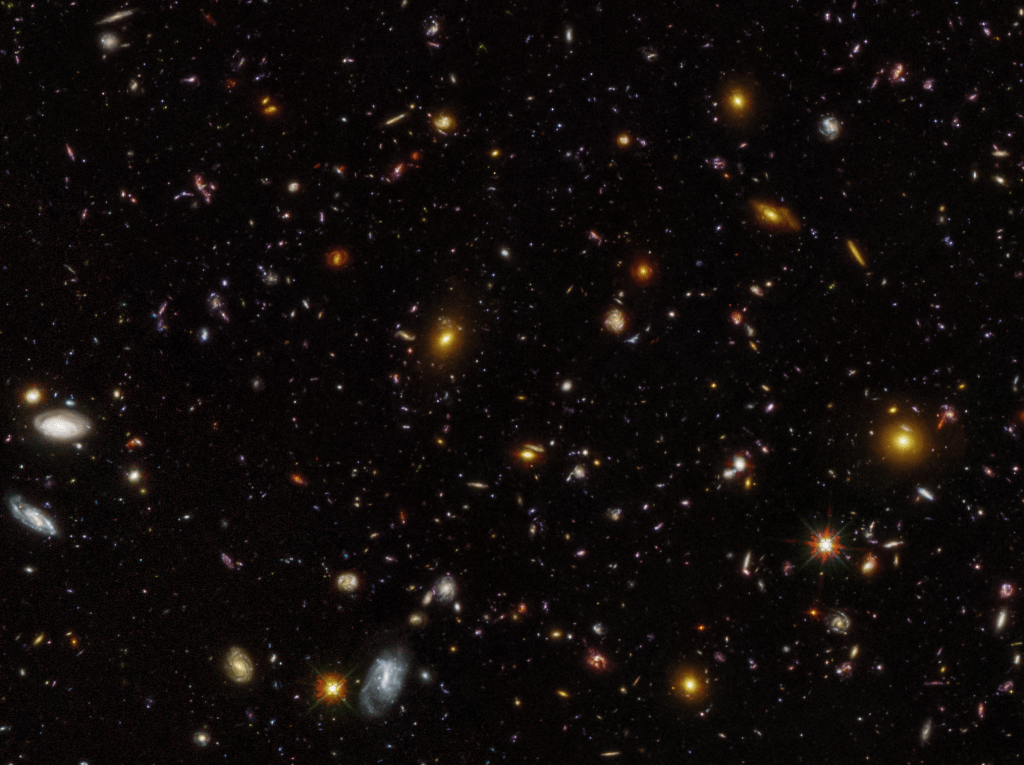With the help of NASA’s Hubble Space Telescope, an international team of researchers led by scientists in the Department of Astronomy at Stockholm University has found more black holes in the early universe than has previously been reported. The new result can help scientists understand how supermassive black holes were created.
Currently, scientists do not have a complete picture of how the first black holes formed not long after the big bang. It is known that supermassive black holes, that can weigh more than a billion suns, exist at the center of several galaxies less than a billion years after the big bang.
The new observational results suggest that some black holes likely formed by the collapse of massive, pristine stars during the first billion years of cosmic time. These types of stars can only exist at very early times in the universe, because later-generation stars are polluted by the remnants of stars that have already lived and died. Other alternatives for black hole formation include collapsing gas clouds, mergers of stars in massive clusters, and “primordial” black holes that formed (by physically speculative mechanisms) in the first few seconds after the big bang. With this new information about black hole formation, more accurate models of galaxy formation can be constructed.



Potentially yes. The Big Bounce theory (which is still under active investigation) is one attempt at explaining these, as well as Dark Matter. [1](https://www.livescience.com/physics-mathematics/dark-matter/the-universe-had-a-secret-life-before-the-big-bang-new-study-hints)
[1] ↩︎